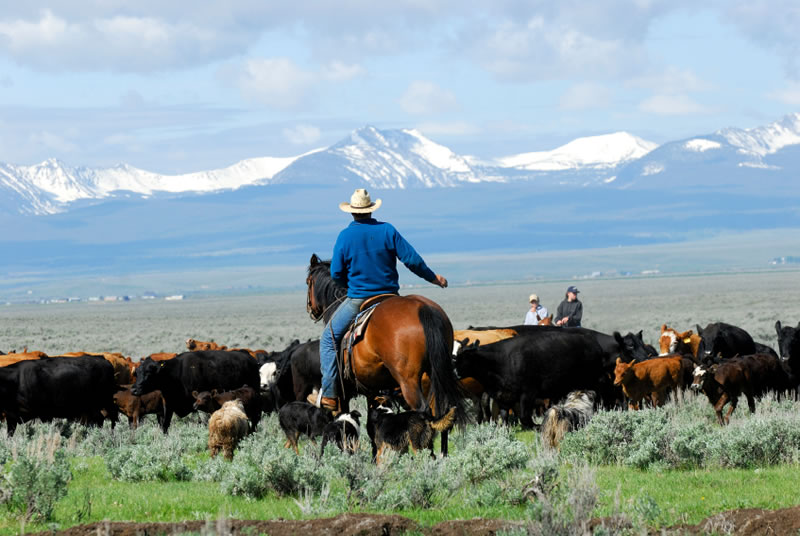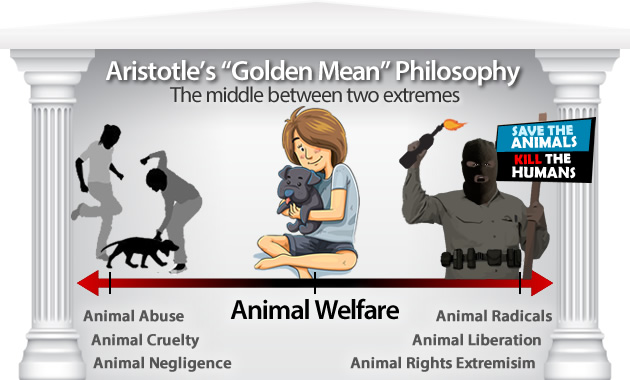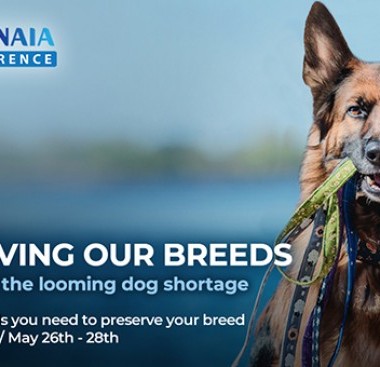What is Animal Welfare and why is it important?
The difference between Animal Rights & Animal Welfare
By: Patti Strand Date: 06/10/2014 Category: | Animal Rights vs Animal Welfare | Animal Welfare |
Some people use the terms animal welfare and animal rights interchangeably, suggesting that they represent the same concerns, principles and practices. But the differences between the two are significant and irreconcilable.
What is Animal Welfare?
In its simplest form, animal welfare refers to the relationships people have with animals and the duty they have to assure that the animals under their care are treated humanely and responsibly.
Despite its current popularity, interest in animal welfare is not a modern phenomenon. Concern for animal care and wellbeing has existed since domestication, which occurred at least 10,000 years ago in Neolithic times. Our appreciation and respect for animals led to their domestication, animal agriculture and animal husbandry, the branch of agriculture that deals with the care and breeding of animals. Many historians consider the development of agriculture to be the most important event in all of human history.
The animal welfare ethic that developed in the Neolithic era is one that obligated people to consider their animals’ welfare in order to achieve their own purposes. It set in place a mutually beneficial arrangement between people and animals that goes like this: “If we take care of the animals, the animals will take care of us.” In this ancient but enduring pact, self-interest demanded that people take good care of their animals. Amazingly, this very fundamental animal welfare ethic survives today, especially in settings where hands-on animal care continues. Today we call this special relationship the human-animal bond.
Dr. Bernard Rollin, an animal science professor at Colorado State University, argues however, that 20th century technology broke this ancient contract when it allowed us to put animals into environments and uses that didn't impair their productivity but harmed their well-being.
That defines the challenge today, the need to provide acceptable levels of animal welfare in a nation that is no longer rural and agricultural, but which in the span of 2 paradigm-shifting centuries has become urbanized and technological. In modern American society only 2% of an ever-increasing population lives on farms and only 1% practices farming as an occupation. This contrasts sharply with the mid 1800’s when 90% of Americans were farmers. If these trends continue, farming will become more concentrated in the future, a situation that makes animal welfare an even more important subject.
Animal Welfare Principles & Policies
 Farmers, ranchers, animal trainers, animal scientists, dog and cat breeders, veterinarians, zoo keepers, and others who live and work with animals recognize these challenges and work within their professions, hobbies and businesses to address them. Businesses that work with animals adopt animal welfare policies, practices and programs to assure the availability of wholesome food and fresh water, veterinary care, proper handling, socialization and in recent years many have added environmental enhancements for the animals they keep. They evaluate individual animals for health and welfare indicators such as energy level, appetite, hair coat, brightness of eye and other signs. Some businesses use scientific methods such as measuring cortisol levels in blood to evaluate stress levels. When best practices are in place and the animals appear comfortable and healthy, the level of animal welfare provided is generally deemed acceptable. Here are some examples of animal care policies and guidelines:
Farmers, ranchers, animal trainers, animal scientists, dog and cat breeders, veterinarians, zoo keepers, and others who live and work with animals recognize these challenges and work within their professions, hobbies and businesses to address them. Businesses that work with animals adopt animal welfare policies, practices and programs to assure the availability of wholesome food and fresh water, veterinary care, proper handling, socialization and in recent years many have added environmental enhancements for the animals they keep. They evaluate individual animals for health and welfare indicators such as energy level, appetite, hair coat, brightness of eye and other signs. Some businesses use scientific methods such as measuring cortisol levels in blood to evaluate stress levels. When best practices are in place and the animals appear comfortable and healthy, the level of animal welfare provided is generally deemed acceptable. Here are some examples of animal care policies and guidelines:
- The American Kennel Club’ Care and Conditions Policy
- The Novartis Animal Welfare Policy for Animals in Research
- The American Zoological Association’s Animal Husbandry and Welfare Policy
- The American Medical Veterinary Association (AVMA) Animal Welfare Principle
- The Five Freedoms is a widely cited animal welfare document both in Europe and in the United States
The Five Freedoms:
- Freedom from Hunger and Thirst - by ready access to fresh water and a diet to maintain full health and vigour.
- Freedom from Discomfort - by providing an appropriate environment including shelter and a comfortable resting area.
- Freedom from Pain, Injury or Disease - by prevention or rapid diagnosis and treatment.
- Freedom to Express Normal Behaviour - by providing sufficient space, proper facilities and company of the animal's own kind.
- Freedom from Fear and Distress - by ensuring conditions and treatment which avoid mental suffering.
There’s broad agreement among animal professionals and the general public that people should treat their animals humanely, but the devil is in the details and debate over how to accomplish that goal rages on. Despite the ability of intensive confinement systems and institutional settings to provide animals with wholesome food and fresh water, and to protect them from predators and extremes in weather, people generally distrust their ability to provide the same level of animal welfare that pastoral life offered in the past. This is the primary animal welfare focus in the US today and it’s one that animal professionals spend considerable resources working to address.
Regardless of the level of care provided and the actual level of wellbeing experienced by the animals, close-confinement housing systems and institutional settings appear unnatural to many onlookers: laboratories where animal studies are conducted; zoos, circuses and marine animal parks where exotic animals can be seen; large farms where thousands of animals may live in close confinement and commercial dog breeding kennels. Even as these businesses explore new approaches and adopt new and improved practices, however, the optics makes it difficult for critics to believe that animal welfare is being nurtured.
Public concern over substandard care and treatment of animals in large-scale or institutional settings has led to an enormous body of federal, state and local laws governing the treatment and housing of animals in these settings, sometimes creating numerous layers of regulations and requiring multiple agencies to perform inspections of the same entity. At the federal level there are laws governing the care of zoo, circus and marine animals; the humane slaughter of farm animals, how laboratory animals should be treated, and how dogs raised in commercial dog breeding kennels should be housed and cared for. In addition, there are countless local ordinances regulating the keeping of animals, laws that regulate dog breeding and a host of other activities that formerly were conducted in more rural settings.
The role of animal welfare in dealing with animal abuse, cruelty and neglect
 In addition to the many programs and policies developed to improve standards of care and wellbeing for animals, animal welfare proponents also work to end animal abuse.
In addition to the many programs and policies developed to improve standards of care and wellbeing for animals, animal welfare proponents also work to end animal abuse.
Animal abuse comes in many forms, but for purposes of simplification, can be separated into two major categories: abuse that occurs as a result of negligence (failure to act properly) or harm that results from deliberate acts. The lines are sometimes blurred between what is intentional and what is not, and cases are decided on the basis of case-specific facts. Every state now has felony laws against animal cruelty, but they vary tremendously from state to state in the acts they designate as felonies, and in the punishment they impose for those crimes.
In the case of neglect, abuse can be the result of ignorance, such as when a pet owner didn’t recognize that a pet needed veterinary treatment; or when it is the result of behavior that a person should have known would cause harm to animals but allowed to continue.
Abuse can also be the result of overt cruelty to animals. Deliberate acts of cruelty include torture, beating or maiming animals as well as activities such as dog fighting, which result in severe pain, injury and death to the animals involved. Deliberate acts of abuse warrant the most severe penalties, not only because of their shocking nature and the immediate harm they inflict, but also because there are well known connections between abuse to animals and violence against people.
Animal Welfare and Animal Rights ARE NOT THE SAME
Many animal welfare proponents call themselves animal rights advocates because that term seems to represent what they believe, but animal welfare and animal rights are based in entirely different beliefs and use different tactics to achieve their goals. Unlike animal welfare principles, which inherently support the humane and responsible use of animals, animal rights tenets oppose all use of animals no matter how humane, or how responsible. PETA’s motto articulates the animal rights position very well, and demonstrates that in this belief system, animal use and animal abuse are synonymous: “Animals are not ours to eat, wear, experiment on, use for entertainment, or abuse in any other way.”
Animal rights campaigns use animal welfare issues to promote their agenda
Although packaged for maximum appeal, animal rights beliefs conflict with the views of at least 94% of Americans, the number who eat meat. And an additional portion, omnivores and vegetarians alike, benefit from medical advances, go to circuses and zoos, keep pets, hunt or fish, ride horses or otherwise use animals. Americans are generally unaware of the true animal rights agenda. And that makes sense: Although animal rights leaders state their positions clearly when speaking to their followers, many of them hide their true beliefs under a mantle of animal welfare rhetoric when speaking to the public, misleading their audiences about their true agenda. Animal rights campaigns frequently use strategic deceptions against animal owners and businesses. Many people who view themselves as animal rights advocates are simply people who love animals and want to do something to improve their lives. They are unaware of radical path charted by the animal rights leadership.
Peta President - Interview on violent animal rights activities
For the animal rights movement, the ends justify the means
It is also important to recognize that the animal rights movement is the only social movement in the US with a history of working with underground criminals, which the FBI has named single issue terrorists. Notably, many in the animal rights leadership do not condemn violence when it is committed in the name of their cause, a hallmark of unethical and radical movements. Many animal rights groups do little more than exploit animal welfare problems for their own fundraising purposes. Sometimes the fundraising campaign amounts to no more than raising concerns about an industry or pastime that utilizes animals, labeling them as cruel in order to position themselves on the high moral ground and raise money. The ASPCA and HSUS recently paid $9.3 million and $15.75 million respectively to the company that owns Ringling Bros circus to settle, among other things, a Racketeering Corrupt Organization Act (RICO) lawsuit in which they were defendants because they (or their affiliates) improperly paid someone to be a witness against the company with testimony that was not found to be credible.
Another area of disagreement between animal welfare and animal rights proponents is over the legal status of animals. Animal welfare advocates call for animal protection laws. Animal rights supporters push for legal rights for animals, something that requires a change in the legal status of animals and mandates a new class of government administrators to make decisions on behalf of animals. Fundamentally, the animal rights approach to animals is less about improving their care than it is about politics. It’s about power. Specifically it’s about who decides how animals will be treated including whether they should remain in private ownership at all, or be placed in sanctuaries created to provide animals refuge from human ownership and use. Animal rights ideology works to separate people from animals and if achieved would sever the human-animal bond.
The ethical framework that supports animal welfare principles springs from the Western ethical tradition, one that embraces tolerance for diversity and minority views and uses knowledge and education rather than coercion to advance its objectives. The willingness of the animal rights leadership to misrepresent their beliefs and motives and to work with illegal factions indicates that their views arise from different roots.
Animal Welfare - The middle ground between two extremes
Aristotle's Golden Mean
The great philosopher Aristotle espoused an ideal he termed the "golden mean" the desirable middle between two extremes, one of excess and the other of deficiency. His ethical framework is outlined in this chart. Though sometimes difficult to achieve, these are the principles that mainstream animal welfare organizations like the National Animal Interest Alliance strive to achieve, making steady progress without compromising other important values like honesty, integrity, lawful conduct and love for our fellow man. Here is an explanatory poster which provides an Overview of Animal Related Philosophies & Organizations that may enable you to visualize the interplay between these concepts and competing values.

The NAIA: Promoting Animal Welfare
The National Animal Interest Alliance is a moderate, mainstream animal welfare organization. To learn more about us, please read the NAIA Values Statement here and visit us at http://www.naiaonline.org
About The Author
All Authors Of This Article: | Patti Strand |













